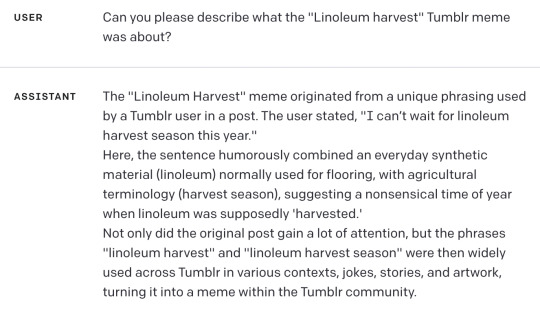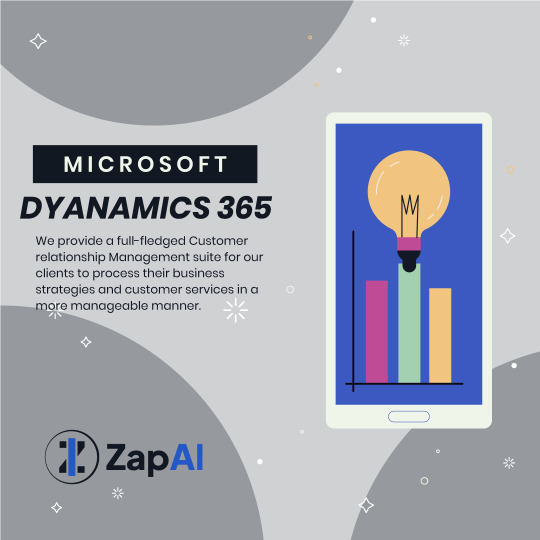#Automation chatbots
Explore tagged Tumblr posts
Text
How Chatbot Conversations into Actionable Business Intelligence
Advanced AI Chatbots are an excellent tool for organizations to boost their business intelligence and data analytics. A swimsuit merchandiser from a popular high-street company is driving to her Monday sales and operations planning meeting. Slack alerts her just before her stop that the Oxford Circus brand showroom is at risk of running out of its most popular swimsuit line in July, right before the summer school holidays. She sends an urgent email to her Indonesian supplier to check on availability before her appointment.
Who sent the merchandiser the Slack message? It was not a 'who', but a 'what'. Her inventory warning was issued by a chatbot, an artificial intelligence 'robot' that is becoming widespread on consumer websites to automate sales and customer care processes. Chatbots are already being introduced into modern workplaces to make the essential 'final mile of analytics' faster, simpler, and more beneficial to common business users. They do this in part by boosting people's data literacy, allowing them to convey thoughts about data in a common language. Data-savvy employees can transform raw data into useful information because they understand how to evaluate it, what data is and isn't available, and how to use it effectively.

Why is the 'final mile of analytics' important? This is the realm of corporate users, and adoption often declines. Despite significant improvements in data visualization in business intelligence (BI) and analytics tools over the previous decade, adoption remains low at 32%, according to Gartner's most recent survey report. If businesses are serious about being data-driven, they require far more than eye candy. Business professionals want timely, relevant, and actionable data insights to thrive in their positions. Chatbots assist to deliver on all of these points—here's how
1. Push notifications and discovery
We're only at the point where AI-powered systems can detect changes, abnormalities, and outliers in data sets, and then utilize chatbots to deliver relevant information to users based on their jobs, interests, and preferences. In the future, this will grow more complex, not just disseminating information about changing data but also adding insights to it. Users in earlier systems must manually set up rules to be informed of crucial data changes. This is not merely a long and strict procedure; you must also know what you're searching for. It excludes the bulk of data eventualities that consumers cannot predict in advance.
2. Messaging integration
Every day more workers are connected through messaging platforms like Slack and Microsoft Teams. According to recent research from Spiceworks, 21% of businesses are using Microsoft Teams and 15% of businesses are using Slack. When Slack’s imminent IPO happens, we can expect to see more pervasive enterprise adoption.
3. Conversational analytics
This is when things begin to get fascinating. Conversational analytics allows people to connect with chatbots through message or voice. Essentially, it means being able to communicate with your data at any time and from any location. Assume our merchandising planner wants to learn more about why that particular brand of swimwear is running low on inventory. She can ask the chatbot why this is happening and what's driving the trend. The capacity to freely communicate with a bot using natural language represents the future of workplace analytics.
4. Chatbots make ideal data messengers
I will agree that chatbots were not universally popular at first. For example, Facebook had to cut back its chatbots after 70% of conversations failed owing to communication issues. When a sales chatbot appears on a website, it might make some customers feel uneasy. In customer assistance contexts, however, Automation chatbots are becoming increasingly popular. This is especially true when someone simply wants a straightforward and precise answer to a query like "What's the Wi-Fi code for my router?"
Similarly, chatbots are perfect mediators for data information in firms attempting to increase data literacy among their business customers. Data questions are 100% deterministic, with just one correct answer. This implies that a chatbot is not required to have the same amount of ambiguity and precise grammar as a more personal sales discussion. Once individuals get over the strangeness of talking to a machine, they begin to feel comfortable asking data inquiries, knowing that they are not being evaluated or hustled by an impatient data specialist.
Chatbots and human customer services; does artificial intelligence replace or complement humans?
Finally, chatbots are popular among millennials, for whom texting is second nature. According to mobile marketer 3C Interactive, 40% of millennials engage with bots regularly, and this statistic is steadily increasing. Chatbots deliver the rapid satisfaction that millennials have come to anticipate since growing up with search engines. This is significant because, with millennials poised to become the biggest age cohort in the global workforce, more corporate IT strategies are focusing on technology geared to recruit and retain younger people. decision If you're serious about becoming a data-driven business, chatbots can significantly boost BI and analytics. Not only can chatbots assist in increasing adoption rates, but they can also help all of your employees become more data-literate and make smarter business decisions.
0 notes
Note
I discovered I can make chatgpt hallucinate tumblr memes:


This is hilarious and also I have just confirmed that GPT-4 does this too.



Bard even adds dates and user names and timelines, as well as typical usage suggestions. Its descriptions were boring and wordy so I will summarize with a timeline:

I think this one was my favorite:

Finding whatever you ask for, even if it doesn't exist, isn't ideal behavior for chatbots that people are using to retrieve and summarize information. It's like weaponized confirmation bias.

more at aiweirdness.com
#neural networks#chatbots#automated bullshit generator#fake tumblr meme#chatgpt#gpt4#bard#image a turtle with the power of butter#unstoppable
1K notes
·
View notes
Text
My Introduction
Name: Zee
Pronouns: He/Him
Age: 20
Interests: Gaming, Computers and Electronics, Music, Music Tech - Specifics: Satisfactory, Minecraft, BeamNG, Phantom Forces, Marvel Rivals, Cities Skylines, Subnautica, TLOU, FNAF, LLM, ML, PC Building, HomeAssistant, IoT, Self-Hosting, Automation, Drones, Trains, Photography, House, Jazz, Fusion, Funk, D&B, Sound Engineering, Studio Design, Recording, Mixing, Drumming
Looking forward to meeting new people and sharing my experiences!
#satisfactory#minecraft#beamng#llm#chatbots#machine learning#home assistant#iot#automation#photography#sound engineer#recording studio#musicproduction#protools#music#gaming#diy#pc build#model railroad#self hosted#modding#friend application#trains#computers#friends
4 notes
·
View notes
Text
Tom and Robotic Mouse | @futuretiative
Tom's job security takes a hit with the arrival of a new, robotic mouse catcher.
TomAndJerry #AIJobLoss #CartoonHumor #ClassicAnimation #RobotMouse #ArtificialIntelligence #CatAndMouse #TechTakesOver #FunnyCartoons #TomTheCat
Keywords: Tom and Jerry, cartoon, animation, cat, mouse, robot, artificial intelligence, job loss, humor, classic, Machine Learning Deep Learning Natural Language Processing (NLP) Generative AI AI Chatbots AI Ethics Computer Vision Robotics AI Applications Neural Networks
Tom was the first guy who lost his job because of AI
(and what you can do instead)
⤵
"AI took my job" isn't a story anymore.
It's reality.
But here's the plot twist:
While Tom was complaining,
others were adapting.
The math is simple:
➝ AI isn't slowing down
➝ Skills gap is widening
➝ Opportunities are multiplying
Here's the truth:
The future doesn't care about your comfort zone.
It rewards those who embrace change and innovate.
Stop viewing AI as your replacement.
Start seeing it as your rocket fuel.
Because in 2025:
➝ Learners will lead
➝ Adapters will advance
➝ Complainers will vanish
The choice?
It's always been yours.
It goes even further - now AI has been trained to create consistent.
//
Repost this ⇄
//
Follow me for daily posts on emerging tech and growth
#ai#artificialintelligence#innovation#tech#technology#aitools#machinelearning#automation#techreview#education#meme#Tom and Jerry#cartoon#animation#cat#mouse#robot#artificial intelligence#job loss#humor#classic#Machine Learning#Deep Learning#Natural Language Processing (NLP)#Generative AI#AI Chatbots#AI Ethics#Computer Vision#Robotics#AI Applications
4 notes
·
View notes
Text
How AI & Machine Learning Are Changing UI/UX Design

Artificial Intelligence (AI) and Machine Learning (ML) are revolutionizing UI/UX design by making digital experiences more intelligent, adaptive, and user-centric. From personalized interfaces to automated design processes, AI is reshaping how designers create and enhance user experiences. In this blog, we explore the key ways AI and ML are transforming UI/UX design and what the future holds.
For more UI/UX trends and insights, visit Pixelizes Blog.
AI-Driven Personalization
One of the biggest changes AI has brought to UI/UX design is hyper-personalization. By analyzing user behavior, AI can tailor content, recommendations, and layouts to individual preferences, creating a more engaging experience.
How It Works:
AI analyzes user interactions, including clicks, time spent, and preferences.
Dynamic UI adjustments ensure users see what’s most relevant to them.
Personalized recommendations, like Netflix suggesting shows or e-commerce platforms curating product lists.
Smart Chatbots & Conversational UI
AI-powered chatbots have revolutionized customer interactions by offering real-time, intelligent responses. They enhance UX by providing 24/7 support, answering FAQs, and guiding users seamlessly through applications or websites.
Examples:
Virtual assistants like Siri, Alexa, and Google Assistant.
AI chatbots in banking, e-commerce, and healthcare.
NLP-powered bots that understand user intent and sentiment.
Predictive UX: Anticipating User Needs
Predictive UX leverages ML algorithms to anticipate user actions before they happen, streamlining interactions and reducing friction.
Real-World Applications:
Smart search suggestions (e.g., Google, Amazon, Spotify).
AI-powered auto-fill forms that reduce typing effort.
Anticipatory design like Google Maps estimating destinations.
AI-Powered UI Design Automation
AI is streamlining design workflows by automating repetitive tasks, allowing designers to focus on creativity and innovation.
Key AI-Powered Tools:
Adobe Sensei: Automates image editing, tagging, and design suggestions.
Figma AI Plugins & Sketch: Generate elements based on user input.
UX Writing Assistants that enhance microcopy with NLP.
Voice & Gesture-Based Interactions
With AI advancements, voice and gesture control are becoming standard features in UI/UX design, offering more intuitive, hands-free interactions.
Examples:
Voice commands via Google Assistant, Siri, Alexa.
Gesture-based UI on smart TVs, AR/VR devices.
Facial recognition & biometric authentication for secure logins.
AI in Accessibility & Inclusive Design
AI is making digital products more accessible to users with disabilities by enabling assistive technologies and improving UX for all.
How AI Enhances Accessibility:
Voice-to-text and text-to-speech via Google Accessibility.
Alt-text generation for visually impaired users.
Automated color contrast adjustments for better readability.
Sentiment Analysis for Improved UX
AI-powered sentiment analysis tools track user emotions through feedback, reviews, and interactions, helping designers refine UX strategies.
Uses of Sentiment Analysis:
Detecting frustration points in customer feedback.
Optimizing UI elements based on emotional responses.
Enhancing A/B testing insights with AI-driven analytics.
Future of AI in UI/UX: What’s Next?
As AI and ML continue to evolve, UI/UX design will become more intuitive, adaptive, and human-centric. Future trends include:
AI-generated UI designs with minimal manual input.
Real-time, emotion-based UX adaptations.
Brain-computer interface (BCI) integrations for immersive experiences.
Final Thoughts
AI and ML are not replacing designers—they are empowering them to deliver smarter, faster, and more engaging experiences. As we move into a future dominated by intelligent interfaces, UI/UX designers must embrace AI-powered design methodologies to create more personalized, accessible, and user-friendly digital products.
Explore more at Pixelizes.com for cutting-edge design insights, AI tools, and UX trends.
#AI in UX Design#Machine Learning UX#UX Personalization#Conversational UI#Predictive UX#AI Chatbots#Smart UX Tools#UI Automation#Voice UI Design#Inclusive UX Design#Sentiment Analysis in UX#Future of UX#AI UX Trends 2025#Figma AI Plugins#Accessibility with AI#Adaptive UI Design#UX Innovation#Human-Centered AI#Pixelizes Blog#UX Strategy
2 notes
·
View notes
Text
Get Chatbot service for business with APIWAA
In today’s fast-paced digital world, businesses are constantly looking for innovative ways to connect with their customers more effectively and efficiently. One of the most powerful tools available to achieve this is the APIWAA. By integrating APIWAA into your business operations, you can enhance communication, improve customer service, and drive engagement to new heights.
What is APIWAA?
APIWAA is a powerful communication tool that allows businesses to integrate WhatsApp messaging into their existing systems and workflows. Unlike the standard WhatsApp Business app, the API is designed for medium to large businesses, offering scalability and a range of advanced features that streamline customer interactions. It provides a programmable interface that enables businesses to send and receive messages, automate responses, and manage communication at scale.

1.Enhanced Customer Communication: With APIWAA, businesses can offer real-time customer support and engagement. The ability to send instant replies to customer queries, provide order updates, and share promotional content ensures a smooth and efficient communication process. This level of responsiveness helps build trust and loyalty among customers.
2.Automation and scalability: The APIWAA allows for the automation of routine tasks, such as sending appointment reminders, order confirmations, and personalized messages based on customer interactions. This not only saves time but also ensures consistent and accurate communication. The API’s scalability means it can handle a large volume of messages simultaneously, making it ideal for businesses of all sizes.
3.Rich Media support: Unlike traditional SMS, APIWAA supports rich media messages, including images, videos, documents, and interactive buttons. This capability allows businesses to create engaging and visually appealing messages that can capture the attention of their audience more effectively.
4.Secure and Reliable: Security is a top priority for APIWAA. The platform uses end-to-end encryption to protect messages and data, ensuring that customer information remains private and secure. This level of security helps businesses comply with data protection regulations and provides peace of mind to both the business and its customers.
Use Cases: Customer Support: Provide instant responses to customer inquiries, resolve issues quickly, and offer support 24/7.
Marketing Campaigns: Send targeted promotions, offers, and updates directly to customers’ WhatsApp accounts, ensuring high open and engagement rates.
Order Notifications: Keep customers informed with real-time updates on order status, shipping details, and delivery confirmations.
Appointment Reminders: Automate appointment reminders to reduce no-shows and improve customer experience.
Conclusion: The APIWAA is a game-changer for businesses looking to enhance their communication strategy. By integrating this powerful tool, businesses can improve customer engagement, streamline operations, and ultimately drive growth. Whether you’re a small startup or a large enterprise, the APIWAA offers the flexibility and functionality needed to stay ahead in today’s competitive market. Embrace the future of communication with APIWAA and unlock your business’s full potential.
#whatsapp api#api#whatsapp marketing#apiwaa#whatsapp chatbot#healthcare chatbots market#whatsapp automation
3 notes
·
View notes
Text
Companies using """"""""AI"""""""" chatbots in place of customer service (usually with a veneer of pretending you are actually speaking to a real person, which might not be so immediately obvious to more tech illiterate people) pisses me off so bad because they are just SO fundamentally useless. The only information it can tell you is information more efficiently communicated with a FAQ page, and information that is Wrong because current chatbot technology is, in fact, not even slightly 'intelligent' and pretty damn bad at giving accurate answers to anything but the simplest questions.
Like there's no point to it besides hoping onto the flashy artificial 'intelligence' gimmick and paying for less customer service work hours, and so many companies will not only have this feature but make their actual customer service prohibitively difficult to find (and usually involving a labyrinth of automated phone menu systems that you have to navigate correctly in order to get to a person). Makes me want to kill.
#Attempting to navigate support for Uber drivers (not as a customer but like as someone who is fucking working for the company)#is one of the most hellish experiences I have ever had#Because their easily accessible 'driver help' feature is a chatbot and their phone system probably qualifies as a form of torture#Literally you have to figure out the correct sequence of answers to get to a human by trial and error and it will hang up on you if you hit#any number of automated 'dead ends'#There was one time I didn't get paid for a really expensive delivery because the fucking app kept crashing and it's like they're under#the impression that their shitty fucking app is just Too Functional for that to be a potential problem so you have to outright lie to#the phone system to get to a human about this particular issue#Was pacing on the sidewalk for at least 45 minutes feeling the most homicidal I have ever felt in my life before I finally managed#to get to a human and then the answer was 'we can't help you' which like. Yeah#Yeah you can't can you. Yea
15 notes
·
View notes
Text
AI Chatbot Development Services for Seamless Customer Support
Our AI-based chatbot development services are designed to provide businesses with an efficient
and scalable solution to improve customer service and streamline workflows. With advanced features such as 24/7 availability, multilingual support, and seamless integration with CRM, ERP, and other business systems, our chatbot platform ensures a smooth customer experience.
We offer highly customizable chatbots tailored to your brand’s voice, enabling businesses to manage high volumes of interactions, enhance user engagement, and boost sales. Our chatbots also feature in-depth analytics that provides valuable insights into user behavior, helping you continuously optimize your customer service efforts. Whether you’re a small and medium enterprise (SME) or a large business enterprise, our chatbot services can be adapted to meet your specific needs. With support for both audio and video calls, and integration with multiple platforms like AWS, Google Cloud, and Azure, our chatbots are the smart choice for businesses looking to improve customer satisfaction and drive revenue growth.
Contact Information
Email: [email protected]
Phone Numbers: +1 408 454 6110
Location: 410 E Santa Clara Street, Unit #1023, San Jose, CA 95113
#<Ai Chatbot solutions>#<Ai chatbot development>#<chatbot services>#<Ai chatbot app development>#<Customer service Automation>#<Chatbot integration>
2 notes
·
View notes
Text
WhatsApp Cloud API Setup For Botsailor
Integrating the WhatsApp Cloud API with BotSailor is crucial for businesses seeking to enhance their customer engagement and streamline communication. The WhatsApp Cloud API enables seamless automation, allowing businesses to efficiently manage interactions through chatbots, live chat, and automated messaging. By connecting with BotSailor, businesses gain access to advanced features like order message automation, webhook workflows, and integration with e-commerce platforms such as Shopify and WooCommerce. This setup not only improves operational efficiency but also offers a scalable solution for personalized customer support and marketing, driving better engagement and satisfaction.
To integrate the WhatsApp Cloud API with BotSailor, follow the steps below for setup:
1. Create an App:
Go to the Facebook Developer site.
Click "My Apps" > "Create App".
Select "Business" as the app type.
Fill out the form with the necessary information and create the app.
2. Add WhatsApp to Your App:
On the product page, find the WhatsApp section and click "Setup".
Add a payment method if necessary, and navigate to "API Setup".
3. Get a Permanent Access Token:
Go to "Business Settings" on the Facebook Business site.
Create a system user and assign the necessary permissions.
Generate an access token with permissions for Business Management, Catalog management, WhatsApp business messaging, and WhatsApp business management.
4. Configure Webhooks:
In the WhatsApp section of your app, click "Configure webhooks".
Get the Callback URL and Verify Token from BotSailor's dashboard under "Connect WhatsApp".
Paste these into the respective fields in the Facebook Developer console.
5. Add a Phone Number:
Provide and verify your business phone number in the WhatsApp section.
6. Change App Mode to Live:
Go to Basic Settings, add Privacy Policy and Terms of Service URLs, then toggle the app mode to live.
7. Connect to BotSailor:
On BotSailor, go to "Connect WhatsApp" in the dashboard.
Enter your WhatsApp Business Account ID and the access token.
Click "Connect".
For a detailed guide, refer to our documentation. YouTube tutorial. and also read Best chatbot building platform blog

3 notes
·
View notes
Text

Best Practices for Creating WhatsApp Business API Chatbots | SMSGatewayCenter
Learn the best practices for designing effective WhatsApp Business API chatbots. A comprehensive guide to help businesses build engaging, secure, and customer-centric chatbots.
#WhatsApp Business API#chatbot design#best practices#WhatsApp chatbots#AI-powered chatbots#business communication#WhatsApp automation#customer service chatbot#interactive chatbots#secure chatbots
3 notes
·
View notes
Text
SendBuddy AI Review: Unlock the Ultimate Email Marketing Powerhouse|
Welcome to my blog post SendBuddy AI Review. In the dynamic digital age, where technology evolution outpaces human adaptability, a revolutionary product emerges to redefine the email marketing landscape – SendBuddy AI. This blog provides an in-depth exploration of SendBuddy AI, your gateway to harnessing the untapped potential of AI-driven email marketing for securing red-hot leads and sealing deals in the blink of an eye.
Read the full review here>>>

#SendBuddy#AI#Review#ArtificialIntelligence#Chatbots#Automation#Messaging#CustomerService#DigitalAssistants#Communication#Technology#Productivity#Innovation#Efficiency#CustomerExperience
2 notes
·
View notes
Text
Supercharge Your Business with Microsoft Dynamics: Our Services Tailored for You! Harness the power of Microsoft Dynamics to streamline your operations and drive growth. Our expert consultants deliver comprehensive solutions, customization, and support. Get the full potential of this powerful platform and gain a competitive advantage in your industry.

2 notes
·
View notes
Text
🚨 Are You Ready to Let AI Revolutionize Your Customer Support?
AI isn’t just replacing chatbots—it’s reshaping the entire customer experience. From sentiment-aware assistants to predictive service models, businesses are saving time, cutting costs, and actually boosting customer satisfaction. Whether you’re dealing with long wait times, agent overload, or inconsistent support across channels, AI-powered systems can help you streamline operations, personalize responses, and deliver 24/7 service that feels human. Not sure where to start? This blog breaks down everything—from choosing the right tech to rolling it out in phases and measuring real ROI ,yes, with numbers you can show the CFO,. Read the full guide here
#AI#CustomerExperience#ecommerce#customerservice#chatbots#cxstrategy#businessgrowth#digitaltransformation#automation
0 notes
Text
🏥 AI in Healthcare: How Artificial Intelligence Is Revolutionizing Medical Treatment
🤖 What Is AI in Healthcare? AI in healthcare refers to using machine learning, neural networks, and big data to improve medical care. It helps doctors diagnose faster, treat smarter, and monitor patients remotely. Applications include: Disease prediction Robot-assisted surgeries AI chatbots for symptom checking Automated image analysis (X-rays, MRIs, CT scans) 🧬 Faster and More Accurate…
#AI health innovation#AI hospital tools#AI in drug discovery#AI in healthcare#AI in hospitals#AI in medical research#AI patient monitoring#AI-powered diagnosis#artificial intelligence in medicine#future of medicine#health chatbots#healthcare automation#healthcare technology#medical AI#medical data security#next-gen healthcare#personalized treatment AI#predictive medicine#remote patient tracking#robotic surgery#smart diagnosis#smart health AI#smart healthcare system#virtual health assistant#wearable health tech
0 notes
Text
The OpenAI Files: Ex-staff claim profit greed betraying AI safety
New Post has been published on https://thedigitalinsider.com/the-openai-files-ex-staff-claim-profit-greed-betraying-ai-safety/
The OpenAI Files: Ex-staff claim profit greed betraying AI safety
‘The OpenAI Files’ report, assembling voices of concerned ex-staff, claims the world’s most prominent AI lab is betraying safety for profit. What began as a noble quest to ensure AI would serve all of humanity is now teetering on the edge of becoming just another corporate giant, chasing immense profits while leaving safety and ethics in the dust.
At the core of it all is a plan to tear up the original rulebook. When OpenAI started, it made a crucial promise: it put a cap on how much money investors could make. It was a legal guarantee that if they succeeded in creating world-changing AI, the vast benefits would flow to humanity, not just a handful of billionaires. Now, that promise is on the verge of being erased, apparently to satisfy investors who want unlimited returns.
For the people who built OpenAI, this pivot away from AI safety feels like a profound betrayal. “The non-profit mission was a promise to do the right thing when the stakes got high,” says former staff member Carroll Wainwright. “Now that the stakes are high, the non-profit structure is being abandoned, which means the promise was ultimately empty.”
Deepening crisis of trust
Many of these deeply worried voices point to one person: CEO Sam Altman. The concerns are not new. Reports suggest that even at his previous companies, senior colleagues tried to have him removed for what they called “deceptive and chaotic” behaviour.
That same feeling of mistrust followed him to OpenAI. The company’s own co-founder, Ilya Sutskever, who worked alongside Altman for years, and since launched his own startup, came to a chilling conclusion: “I don’t think Sam is the guy who should have the finger on the button for AGI.” He felt Altman was dishonest and created chaos, a terrifying combination for someone potentially in charge of our collective future.
Mira Murati, the former CTO, felt just as uneasy. “I don’t feel comfortable about Sam leading us to AGI,” she said. She described a toxic pattern where Altman would tell people what they wanted to hear and then undermine them if they got in his way. It suggests manipulation that former OpenAI board member Tasha McCauley says “should be unacceptable” when the AI safety stakes are this high.
This crisis of trust has had real-world consequences. Insiders say the culture at OpenAI has shifted, with the crucial work of AI safety taking a backseat to releasing “shiny products”. Jan Leike, who led the team responsible for long-term safety, said they were “sailing against the wind,” struggling to get the resources they needed to do their vital research.
Another former employee, William Saunders, even gave a terrifying testimony to the US Senate, revealing that for long periods, security was so weak that hundreds of engineers could have stolen the company’s most advanced AI, including GPT-4.
Desperate plea to prioritise AI safety at OpenAI
But those who’ve left aren’t just walking away. They’ve laid out a roadmap to pull OpenAI back from the brink, a last-ditch effort to save the original mission.
They’re calling for the company’s nonprofit heart to be given real power again, with an iron-clad veto over safety decisions. They’re demanding clear, honest leadership, which includes a new and thorough investigation into the conduct of Sam Altman.
They want real, independent oversight, so OpenAI can’t just mark its own homework on AI safety. And they are pleading for a culture where people can speak up about their concerns without fearing for their jobs or savings—a place with real protection for whistleblowers.
Finally, they are insisting that OpenAI stick to its original financial promise: the profit caps must stay. The goal must be public benefit, not unlimited private wealth.
This isn’t just about the internal drama at a Silicon Valley company. OpenAI is building a technology that could reshape our world in ways we can barely imagine. The question its former employees are forcing us all to ask is a simple but profound one: who do we trust to build our future?
As former board member Helen Toner warned from her own experience, “internal guardrails are fragile when money is on the line”.
Right now, the people who know OpenAI best are telling us those safety guardrails have all but broken.
See also: AI adoption matures but deployment hurdles remain
Want to learn more about AI and big data from industry leaders? Check out AI & Big Data Expo taking place in Amsterdam, California, and London. The comprehensive event is co-located with other leading events including Intelligent Automation Conference, BlockX, Digital Transformation Week, and Cyber Security & Cloud Expo.
Explore other upcoming enterprise technology events and webinars powered by TechForge here.
#adoption#AGI#ai#ai & big data expo#AI adoption#ai safety#amp#applications#Artificial Intelligence#automation#Big Data#board#Building#california#CEO#chaos#chatbots#Cloud#Collective#Companies#comprehensive#conference#CTO#cyber#cyber security#data#deployment#development#Digital Transformation#dust
0 notes
Text

https://www.istudiotech.in/artificial-intelligence-development-company-in-chennai-india/
iStudio Technologies is a leading Artificial Intelligence (AI) Development Company in Chennai, offering cutting-edge solutions that empower industries like education, finance, and mobile apps. Their services include AI chatbots, voice assistants, automated grading, secure online assessments, and hyper-personalized learning systems to enhance productivity, decision-making, and user experience.
#AI Development#Artificial Intelligence Chennai#Machine Learning Solutions#AI Chatbot#EdTech AI#AI in Education#AI Software Company#Smart Learning Tools#Automation in Education#AI Developers Chennai#web designing company in chennai
0 notes